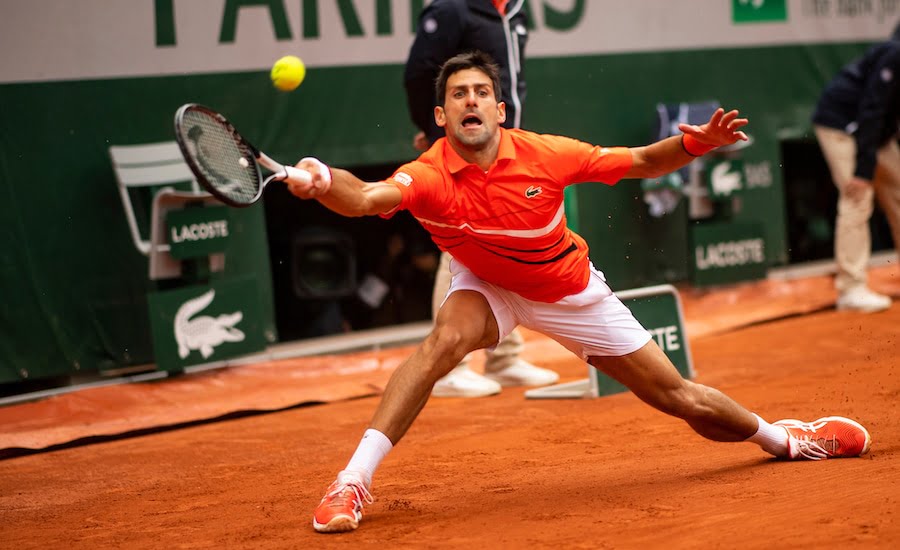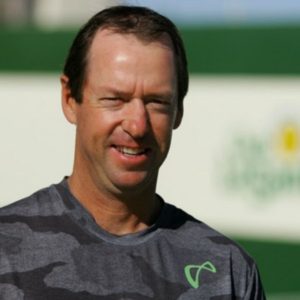
EXCLUSIVE: Novak Djokovic strategy coach reveals key fact that decides clay court matches
In an exclusive extract from his new Dirtballer strategy course, which focuses on clay-court data from the past three seasons, Craig O’Shannessy, strategy coach to Novak Djokovic, Matteo Berrettini, Wimbledon and the ATP Tour and founder of www.braingametennis.com, reveals how short rather than long rallies are what decide most matches on terre battue
It’s time to re-think clay-court tennis. It’s time to put a scientific lens on a very unscientific slice of our sport and discover what matters most to winning on the beautiful “terre battue”.
Historically, with the absence of match data, the tennis world has wildly generalised about what matters most to triumph on clay. Practice regimes, models, methods, philosophies and paradigms dominate the fervent culture of clay-court countries much more than their hard-court counterparts.
The fundamental principles of practising on clay are etched in stone. Traditional clay-court dogma doubles down on patience, perseverance, consistency, grinding, shot tolerance and, yes, even suffering.
Unfortunately, we have put the cart before the horse, or, to be more specific, the practice court before the match court. The golden age of tennis analytics is upon us and the reality of what happens in a match on clay is not in step with time-honoured practice principles. We have now arrived at a point where we no longer have to guess about anything that happens in a match.
In short, the reality of clay-court tennis is nothing like the popular mantra.
Roland Garros 2017
Tennis statistics fall into two distinct categories:
- Percentage points played (counting the number of times something happened)
- Percentage points won (calculating the win percentage)
Both stats help build a narrative, but the second one – percentage points won – tells a better story of why players win and lose matches on all surfaces. Which brings us to Roland Garros in 2017.
When you examine a statistics report from a match, you naturally compare data between the match winner and the match loser to figure out what battles mattered most to the final outcome. You look for a line item on the stats sheet that played the most pivotal role to explain why a player proved victorious.
Clay-court dogma suggests it’s all about the long rallies, which soak up so much time on the practice court. It’s actually the exact opposite. The most important line item on a tennis stats sheet from a clay-court match is winning the first four shots. To be clear, that means each player hits a maximum of just two shots in the rally.
Win this individual battle and you are more likely to win the war on clay more than anything else. To give this a little more perspective, winning the short rallies on clay is much more important than winning the long rallies – just as it is on every other surface.
We think clay-court tennis is a different animal. We paint it with a very different brush, creating an illusion that being more consistent is better. Less is actually way better than more on clay.
The way to interpret this data is to bring together the following two elements.
- The data set is everyone that WON their match.
- The percentage identifies how often the match winner performed better than the match loser in the specific strategic line item.
For example, 89.0 per cent of match winners in the 2017 Roland Garros men’s draw also won more points than the match loser in the 0-4 shot category. However, match winners won more points in the 9+ shot rally only 65.7 per cent of the time.
French Open 2017 – men
| Strategy | Win percentage |
| 0-4 shots won | 89 |
| First serve points won | 85.2 |
| Baseline points won | 82.4 |
| Fewer forced errors | 77.9 |
| Second serve points won | 76.6 |
| Break points won | 70.9 |
| Fewer unforced errors | 67.2 |
| 9+ shots | 65.7 |
| 5-8 shots | 65.2 |
| Winners | 63.9 |
| Net points won | 61.9 |
| Aces | 59.4 |
| Fewer double faults | 56.1 |
| First serve percentage | 55.7 |
| Average first serve speed | 50.8 |
For the men, winning the short rallies in the 0-4 shot rally length means more to winning the match than anything else. As you will see from the following table, it’s the same dynamic in women’s tennis.
French Open 2017 – women
| Strategy | Win percentage |
| 0-4 shots won | 84.5 |
| First serve points won | 83.9 |
| Baseline points won | 82.8 |
| Fewer forced errors | 76.4 |
| Second serve points won | 68 |
| Break points won | 67.8 |
| Fewer unforced errors | 66.4 |
| 9+ shots | 66 |
| 5-8 shots | 65.6 |
| Winners | 58 |
| Net points won | 57.2 |
| Aces | 55.7 |
| Fewer double faults | 54.4 |
| First serve percentage | 53.6 |
| Average first serve speed | 51.7 |
For both men and women, winning short rallies in the 0-4 shot range had a much higher correlation to winning the match than winning the long grinding rallies of 9+ shots, which has been the dominant focus of clay court practice courts all over the world.
Short rallies vs long rallies
MEN: Match winner won more points vs match loser
- 0-4 shots: 89.0 per cent
- 9+ shots: 65.7 per cent
- Gap: 23.3 percentage points
WOMEN: Match winner won more points vs match loser:
- 0-4 shots: 84.5 per cent
- 9+ shots: 55.7 per cent
- Gap: 28.8 percentage points
Case study: Rafael Nadal, 2017 Roland Garros champion
Rafael Nadal is the poster child of the “Spanish system”. According to the training philosophy,
he should greatly outperform his rivals at Roland Garros much more in longer rallies than in shorter ones.
It’s just not so. Nadal played more than FOUR TIMES more points in the short rally length of 0-4 shots than the long rally length of 9+ shots (62 per cent to 15 per cent). Nadal is the king of clay because he dominates the short much more than he dominates the long.
2017 Roland Garros: Rafael Nadal points played

Nadal, on clay, is like Nadal on any other surface – the king of first-strike tennis. The Spaniard forged his advantage over opponents much more in short rallies than long ones.
2017 Roland Garros: Nadal points won / points lost
- 0-4 shots: 342 won / 221 lost (+121)
- 5-8 shots: 139 won / 76 lost (+63)
- 9+ shots: 88 won / 50 lost (+38)
Using the above metrics as your guide for the practice court, where would you rather spend the majority of your time? Practising forehands and backhands cross-court, mindlessly, endlessly, or making sure your serve, return and the specific shots of Serve +1 and Return +1 were as sharp as they could be?
Like every other sport, the arrival of big data changes perceptions in tennis, adjusts focus and makes the practice court much more effective. New metrics identifies advantages that are hidden to the naked eye.
The illuminating light of big data has finally reached the sacred “terre battue” and our understanding of what matters most to winning has been forever sharpened. The practice court can now be cut up into derivatives of what matters most on the match court and practised accordingly.
The bullseye of clay-court tennis is exactly the same as the bullseye of hard-court tennis. Winning the battle of the first four shots will get you to the finish line first more than anything else.
About the expert

Craig O’Shannessy is the strategy analyst for Novak Djokovic, Matteo Berrettini, the ATP World tour, Wimbledon, the Australian Open and the New York Times.
Craig now runs a tennis strategy website at www.braingametennis.com
Craig’s latest strategy course, Dirtballer, uses big data to drill down to the essence of winning and losing on dirt. Get rid of the guessing!
Look ahead to 2019 with our guide to every tournament on the ATP Tour, the WTA Tour and the ITF Tour
If you can’t visit the tournaments you love then do the next best thing and read our guide on how to watch all the ATP Tour matches on television in 2019
To read more amazing articles like this you can explore Tennishead magazine here or you can subscribe for free to our email newsletter here


